It's about time! The Secretary of Agriculture has finally signed the mandated penalties in as an addition to the HPA. As posted by the Walking Horse Report, and as received by all HIOs.
**********
HIOs Informed of Impending Mandatory Penalties
Wednesday, March 14, 2012
On the joint Horse Industry Organization (HIO) call yesterday Dr. Rachel Cezar, USDA APHIS Horse Protection Coordinator, informed the representatives of the HIOs on the call that the Secretary of Agriculture had signed the Mandatory Penalty Rulemaking and it will be posted to the Federal Register within a week. This rulemaking had been expected for some time by industry leaders.
Until the rulemaking is posted the particulars surrounding the rulemaking will not be known. At this point it is not known exactly what it mandates, requires or says but typically a window of time would be given to implement a change such as this by the regulations.
A response from the industry is expected after the posting of the rulemaking in the Federal Register.
**********
Basically, what this means is that the mandatory penalty structure must now be incorporated into all of the rulebooks of all HIOs, unless they already have more strict penalty rules in place (such as NWHA). The mandatory penalties are now an extension of the HPA, just like the scar rule is. If the HIO chooses not to incorporate the rules, then they will be responsible for any horses that are found sore at a show affiliated with them, as will the show management. They can be fined and, if Dr. Gipson's threats are still valid, decertified as an HIO.
Click here to read the mandated penalties.
Also, does everyone remember when we had a call to action and we all went to regulations.gov to voice our opinion on the mandated penalties? (Click here for the submittals.) I don't know if those responses helped the Secretary make her decision, but overall, I like to think it did. We stepped up for saving the horse, and we were heard, even if it was just a small bit. This is where we need to keep our focus: keep stepping up and supporting ending soring with our voices, pens, and typing skills. We are the voice for the horse, not the TWH industry. We are capable of making the government understand that we want the law upheld and that enough is enough. We can do this!
-------------------------
USDA Releases 2010 and 2011 "Sniffer" Test Results
Since 2008, the USDA has been using gas chromatography-mass spetrometry (GC/MS) technology to "sniff" out chemicals being used on horses' pasterns in the show ring. The USDA released the 2010 and 2011 results this week, and they are quite astounding. From the email I received ("-caines" are numbing agents.)
2010 Celebration:
Of 302 total samples, 261 (86.4%) positive for foreign substance, and 106 (35.1%) positive for –caines
2010 Trainers Show:
Of 20 total samples, 18 (90%) positive for foreign substance, and 8 (40%) positive for –caines
2010 All shows:
Of 357 total samples, 308 (86.3) positive for foreign substance, and 117 (32.8%) positive for –caines
2011 Celebration:
Of 52 total samples, 52 (100%) positive for foreign substance, and 37 (71.2%) positive for –caines
2011 Trainers Show:
Of 13 total samples, 12 (92%) positive for foreign substance, and 7 (54%) positive for –caines
2011 Fun Show:
Of 20 total samples, 19 (95%) positive for foreign substance, and 12 (60%) positive for –caines
Seems that 98% compliance rate has been blown out of the water, huh?
So let me explain how GC/MS works. I have experience with this technology as I used to work for an environmental consulting firm and had to understand how this machine works in order to be able to write the results in the reports I had to write for the government.
GC/MS is able to detect chemical substances on any surface. The samples are collected via a cotton swab and run through the GC/MS machine to find the results. Click here for a more comprehensive explanation of GC/MS. At the inspection station at horse shows, the VMO collects samples from random horses--none are singled out. The GC/MS machine itself is very sensitive and can detect a lot of chemicals, so it can sound an indication the field when actually it might just be fly spray or shampoo it's sensing. However, it's when the test results come back as to what actual chemicals were being used is where the truth comes out. A GC/MS can tell whether or not the chemicals are benign, such as shampoo, or damaging, such as sulfur or camphor.
What the USDA found are foreign substances that are being used in conjunction with the chain to cause pain and/or sensitivity. They also found multiple -caines, which are products used to numb the leg during inspection but will wear off by the time the horse goes into the show ring. These compounds are NOT found in the only three products that are allowed in the show ring per the HPA: glycerin, mineral oil, or petroletum (Vaseline).
Below are the jpgs of the USDA's Excel files documenting the results. Click the thumbnail to view them online. Click the blue Next button to view the rest of the document. Click directly on the photo to zoom in.
2010 Foreign Substance Results by Show (9 pages) The Substance Found column indicates the substance(s) found on each individual horse; for example, at the Trainers' Show, 20 were tested with 18 positive results, so there are 18 lines to indicate the 18 horses that were found not in compliance.
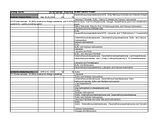
2010 Foreign Substance Results by Compound (2 pages)
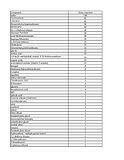
2011 Celebration Foreign Substances Results (2 pages) The Substance Found column indicates the substance(s) found on each individual horse; there are 52 lines to indicate the 52 horses that were found not in compliance.
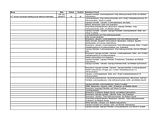
2011 Trainers' Show Foreign Substances Results (1 page) Same setup as the above spreadsheet.
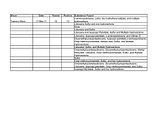
2011 Fun Show Foreign Substances Results (1 page) Same setup as the above two spreadsheets.
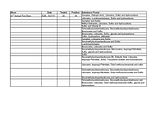
2008 through 2010 Foreign Substance Violations with repeat violations (18 pages)
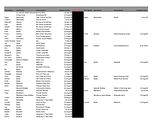
If you google these chemicals, you will find that some of them are not only dangerous to horses, but also to humans. The key here, however, is this: the industry continues to cry that their horses' pasterns are clean, that the GC/MS is picking up chemicals that are in shampoos or fly sprays. Really? Camphor? That's something you find in shampoo?
Folks, whether we like it or not, the HPA says that only three products are allowed on a horse's pasterns in the show ring: glycerin, mineral oil, and petroletum. That is it, period. The chemicals reported in these spreadsheets are not chemicals found in those three products. So if you don't want to get a ticket, don't use products on your horse's pasterns in the ring other than the three allowed. It's that simple.
I think these statistics are pretty clear that chemicals are still being used in the show ring. Anyone who believes otherwise has their head in the sand.

No comments:
Post a Comment